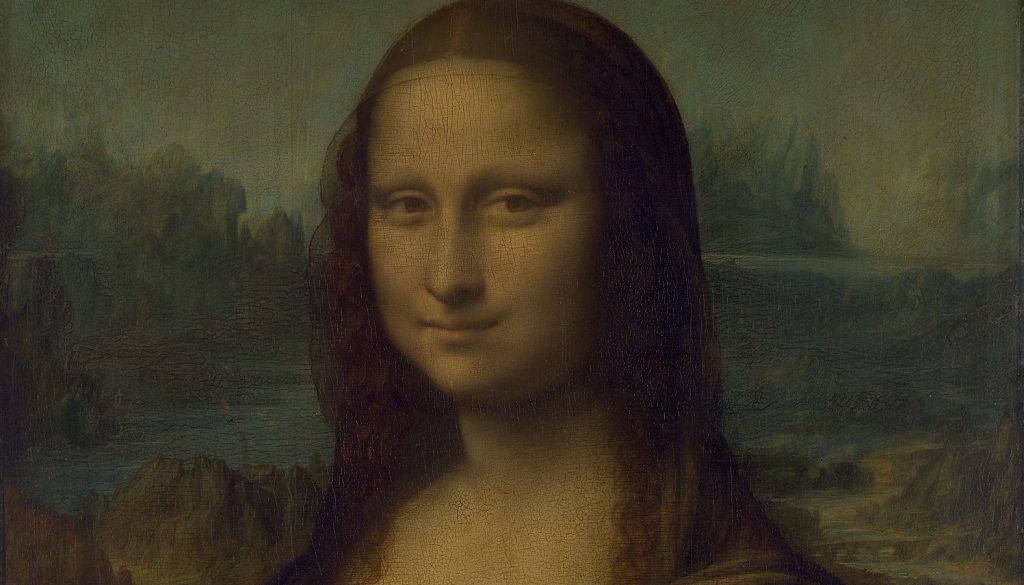So many years ago that it is not worth calculating, I found myself as one of Mark Twain’s “innocents” abroad. When in Rome, one does what Romans do, and when in Paris, one goes to the Louvre.
The Louvre was spectacular. All these years hence I hope it still is. If you cannot go to Paris without visiting the Louvre, you cannot go to the Louvre without seeing Leonardo di Vinci’s “Mona Lisa.” Being a card-carrying American tourist, I felt obliged to seek out the painting.
The Louvre is a big museum. Like Magellan circumnavigating the globe, I trekked from one room to another, experiencing art in a variety of mediums and from varied epochs in human history. Finally, I found my query, the “Mona Lisa.” I knew I found it not because I saw the painting hanging on the museum wall — instead, I found a gaggle of fellow American tourists mashed into a small mob in front of the wall on which the picture hung.
Like a fullback searching for daylight against a 4-3 defense, I found an opening and shot the gap to get my first look at one of the most iconic images in Western art. My first reaction: This is it? This is what all the fuss has been about for the past 500 years?
I was completely underwhelmed by the painting. I chalked my sense of disappointment up to my inner philistine uncivilized self. The painting was smaller than I expected, and the colors were muted and dark. So, I checked the “Mona Lisa” box on my American tourist card and went looking for “Winged Victory of Samothrace.”
In the years since, I have not given much thought to the “Mona Lisa,” until I saw a rerun of the PBS science show “Nova.” It was obvious to my purely pedestrian eye when I saw the “Mona Lisa” in person that this picture needed a good scrubbing. Centuries of oxidation exposure to dust and unfriendly particles in the air had covered the “Mona Lisa” with a dull patina.
That blanket of haze remains because it appears that the experts who know about these things do not want to risk using even current techniques of reviving old paintings on da Vinci’s masterpiece. It is not that an attempt at traditional restoration might not be effective, but rather, it would alter the public image of the painting that has for centuries grown accustomed to the way it looks.

In the “Nova” episode I stumbled upon, science produced a solution. With modern computer scanning and software technology, art experts were able to “clean” the “Mona Lisa” without physically touching the painting itself.
Art historians know exactly the kind of paint da Vinci had at his disposal and what their true colors were. This data was loaded into computers that then scanned every inch of the painting.
The results were dramatic. Suddenly, the painting that everyone honors and admires, mainly because everyone else is honoring and admiring it, truly came back to life.
The blue of the sky was actually blue. The entire painting had a brighter, even majestic feel to it. It was less a dour portrait of a woman and more a celebratory depiction.
Thus the “Mona Lisa” was restored to a state in which its creator had always intended — sound familiar?
I did not think a PBS rerun would give me a “God” moment, but this certainly did. It may be a metaphorical 90-mph fastball down the middle, but watching the “Mona Lisa” come back to life made me think about how I’ve allowed a patina of dust and unfriendly particles to darken my soul.
Did da Vinci think his painting would have an impact on an amateur art lover in the 21st century? I sincerely doubt it. His undeniable genius foresaw things like human flight and armored war machines, but I doubt he looked out his villa window and contemplated the internet, smart phones, or computers that could take one of his creations and replicate it in all its glory.
Except for the masterpiece part, we are all “Mona Lisas.” We were all created by a master artist and, over time, have allowed grime and particles to dim our shine. No computer modeling can ever return us to our previous state, but thankfully, the master artist can and does.
With some cooperation, we can be truly restored to our “true” colors and be the creation our Creator intended us to be.

